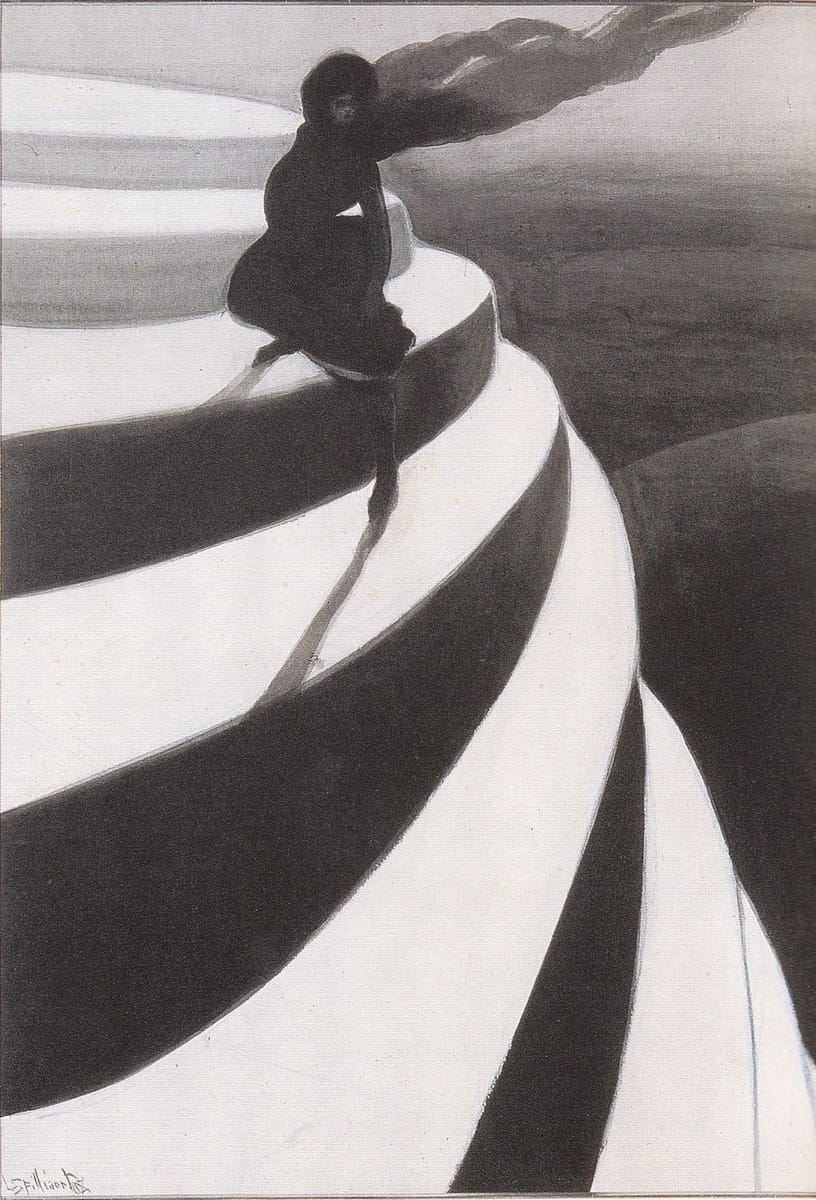

Vertigo, 1908
Léon Spilliaert
Spilliaert works in subtle gradations from inky black to a twilight grey, relieved only by a judicious touch of colour; a solitary figure or the tiny blurred halo of a lamp. The seawall, the shore and long galleries become bold diagonals veering across the picture, creating a sense of dislocation, tension and spatial emptiness. Female figures predominate: fishwives staring out to sea; lone girls poised on vertiginous steps (Vertigo, 1908), or standing at the balustrade before a marine nothingness, one pale hand holding down black skirts dragged sideways by the sea breeze. The face of the girl in The Gust of Wind (1904), recalls that of Munch’s screamer, making the painting a complex enigma of beauty, desire, loneliness, and nightmare.
The young Spilliaert eschewed formal training, teaching himself how to paint; his parents presented him with a smart wooden box of pastels. It was in the artful combining of pastel, gouache, watercolour, and ink that the rebellious amateur quickly showed himself a master. For a few years, before he married, had a child, and settled down to turn his painterly attention to nature, Spilliaert appeared prey to his own phantoms. The much admired series of monochrome self-portraits Spilliaert made around 1907 are ruthlessly honest and surreally disturbing in equal measure.
(https://www.apollo-magazine.com/in-search-of-leon-spilliaert-in-ostend/)
Léon Spilliaert
artistArthur
coming soon